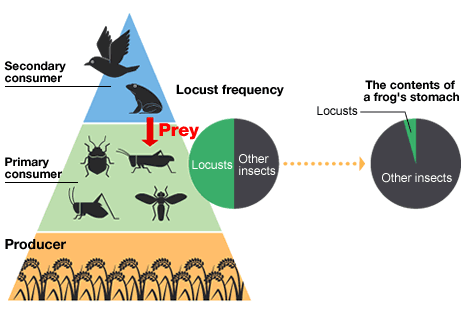| Research: Index >The meaning of the existence of predators in the natural world |
| [The meaning of the existence of predators in the natural world] The ecology that can't be eaten | |
| |
| In the first page of Research this year, we press the acupoint to enjoy research in a chart. The structure enables the thorough observation of the research content on the rear. The second page is a discussion of the relationship with the inedible, lying between that which eats and that which is eaten. |
| There are natural enemies in the natural world, and they prevent certain species from excessively increasing. This is widely known as an experiential fact, but it actually is a phenomenon that cannot be fully explained from an ecological perspective. Natural enemies definitely eat their prey. It’s not the case that they eat more when there are more prey, or refrain from eating them when there are fewer. Additionally, the reverse of the image of a natural enemy is that most predators cannot efficiently catch that many of their prey. |
| For example, a look at a nearby rice paddy will show that half of the insect community is accounted for by locusts. We find, however, that the frogs and the birds, who should be at the top of the food chain, do not actually eat that many of the locusts. Based on the percentage of prey, it is not possible to support the existence of a close food chain. |
 |
 |
|
|
Chromatin supports cell memory | ||
|
|
Iji Dozu: Observing movement | ||
| Rsearch |
|
Please close a window with the button of a browser who are turning off Javascript. |